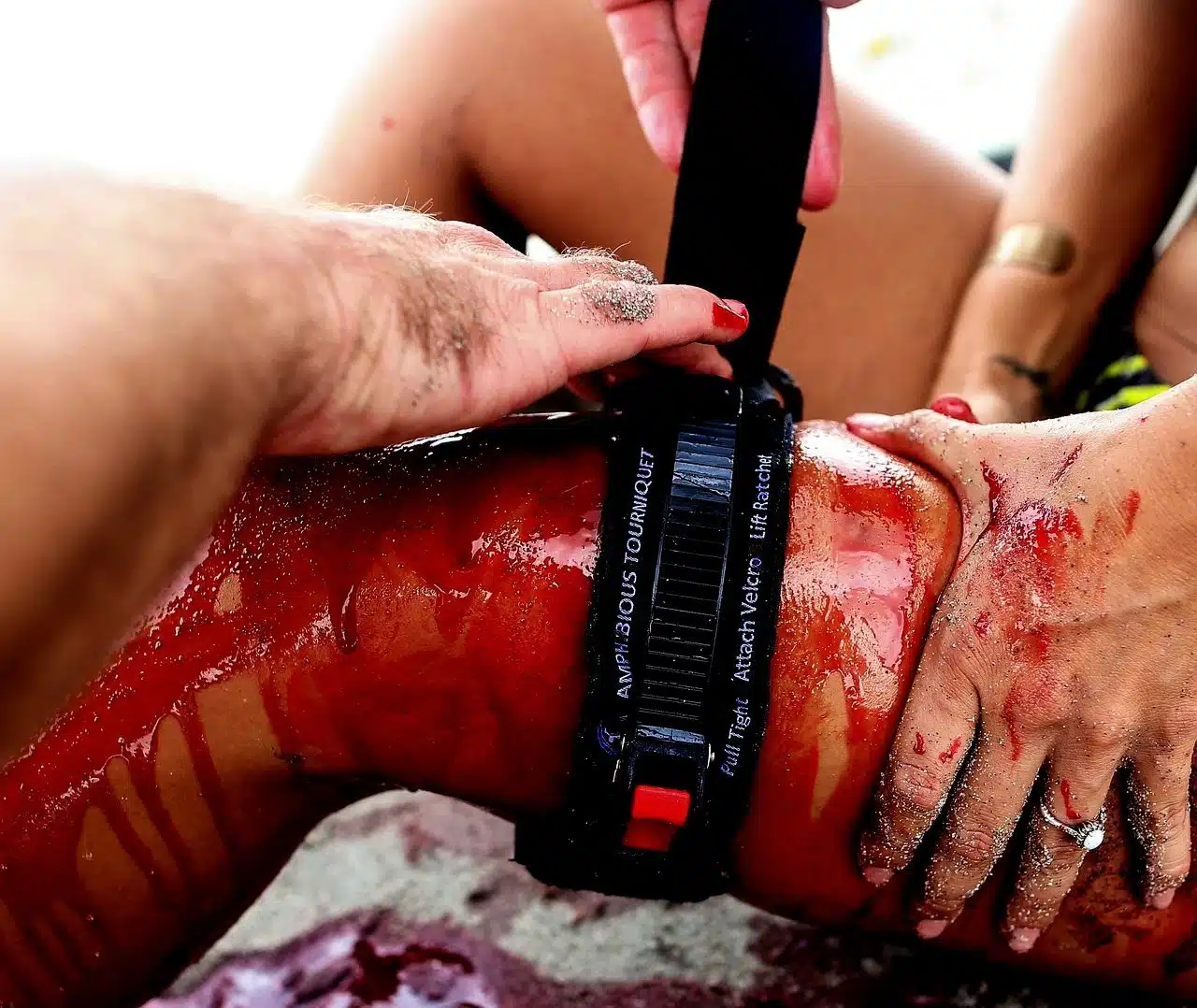
A tourniquet helps stop bleeding.
Tourniquet is a term in our language that comes from the French word tourniquet and has several uses. In the field of medicine and first aid , the procedure carried out to stop bleeding is known as a tourniquet.
The tourniquet can be carried out with a tape or bracelet that allows pressure to be applied and compress the affected area. Generally the objective is to prevent bloodshed, although sometimes the tourniquet is applied when there is no wound but the aim is to differentiate a vein in order to perform a blood draw .
The first time the use of this procedure to control bleeding was documented in 1674 and took place in the midst of military confrontations. It is worth mentioning that the tourniquet is only applied to wounds on the arms and legs .
Benefits and risks of tourniquets
In the professional field of first aid, the practice of a tourniquet is not very well regarded, at least when it is not carried out correctly; In fact, there are multiple stories of injuries that worsened due to this cause and led to the need to amputate the affected limb.
While a poorly applied tourniquet can damage tissue rather than facilitate healing, in the right hands it can be truly useful and necessary . For certain hemorrhages , especially more severe ones, this technique may be the best way to proceed. On battlefields, the tourniquet is still widely used, especially due to the speed with which it can be performed and the fact that it does not require constant monitoring; In addition, it allows the patient to control their own wound, since the procedure does not involve any type of sedation.
When a person suffers an incident in public and needs to stop bleeding, it is likely that someone will assist them by creating an improvised tourniquet. A gunshot or knife wound that causes intense blood loss can be treated temporarily with a tourniquet made from a T-shirt, a piece of pants or any other fabric that allows compression of the wound area.

A type of mechanism used to control access is known as a turnstile or turnstile.
How to do it
The secret to getting the tourniquet to do its job properly is to tighten it enough to stop arterial blood flow ; It is important that there is greater pressure in the arteries than in the veins, and therefore the necessary force is greater. Of course, we must take care not to overdo it when tying the tourniquet, or we run the risk of destroying the tissues. The larger the affected area, the more pressure is needed, and this complicates things even more.
If the tourniquet does not have enough pressure, then the bleeding is likely to get worse by stopping only the return of blood through the veins, but not its flow through the arteries, thus increasing the force of bleeding. Likewise, only a properly trained person should remove the tourniquet, and never leave it on for too long.
The turnstile as access control
A turnstile or turnstile , on the other hand, is a mechanism that serves to control access to a certain space . These turnstiles are made up of bars that, when pushed by the person, rotate when the passage is enabled or act as a brake otherwise. Enabling the passage can be done manually or through electronic approval.
To access a train station or to enter a football stadium , to name two possibilities, people will likely have to go through a turnstile with a card, a ticket, a ticket, etc.
